| [1]Nunes SS,Song H,Chiang CK,et al.Stem Cell-Based Cardiac Tissue Engineering.J.of Cardiovasc.Trans Res. 2011;4: 592-602.[2]Bhaarathy V,Venugopal J,Gandhimathi C,et al.Biologically improved nanofibrous scaffolds for cardiac tissue engineering. Mater Biol Appl.2014;44:268-277.[3]Matsuura K,Haraguchi Y,Shimizu T,et al.Cell sheet transplantation for heart tissue repair. J Control Release. 2013;169:336-340.[4]Shimizu T,Sekine H,Yamato M,et al.Cell Sheet-Based Myocardial Tissue Engineering: New Hope for Damaged Heart Rescue.Curr Pharm Des.2009;15(24):2807-2814.[5]Miyagawa S,Sakaguchi T,Yoshikawa Y,et al.Impaired myocardium regeneration with skeletal cell sheets-a preclinical trial for tissue-engineered regeneration therapy. Transplantation.2010;90:364-372.[6]Miyahara Y,Nagaya N,Kataoka M,et al.Monolayered mesenchymal stem cells repair scarred myocardium after myocardial infarction.Nat Med.2006;12(368)459-465.[7]Heydarkhan-Hagvall S,Schenke-Layland K,Dhanasopon AP,et al.Three-dimensional electro -spun ECM-based hybrid scaffolds for cardiovascular tissue engineering.Biomaterials. 2008;29:2907-2914.[8]Tadakuma T,Tanaka N,Haraguchi Y,et al.Adevice for erapid transfer/transplantation of living cell sheets with the absence of cell damage.Biomaterials.2013;34:9018-9025.[9]Ji W,Yang F,Ma J,et al.Incorporation of stromal cell-derived factor-1 inPCL/gelatin electrospun membranes for guided bone regeneration.Biomaterials.2013;34:735-745.[10]Ye Y,Shi X,Chen X,et al.Chitosan-modified,collagen-based biomimetic nanofibrous membra -nes as selective cell adhering wound dressings in the treatment of chemically burned corneas.J Mater Chem B.2014;2:4226-4236.[11]Zhou T,Mo X,Sun J,et al.Development and Properties of Electrospun Collagen-chitosan Nanofibrous Membranes as Skin Wound Healing Materials.J Fiber Bioeng Informat.2014; 7:319-325.[12]Chihim JL,Joanne Y,Chunwah MY,et al.A comprehensive study on adsorption behaviour of direct, reactive and acid dyes on crosslinked and non-crosslinked chitosan beads.J Fiber Bioeng Informat.2014;7:35-52.[13]Cao Z,Dou C,Dong S,et al.Scaffolding Biomaterials for Cartilage Regeneration.J Nanomater.2014;2014:2526-2536.[14]Jayakumar R,Prabaharan M,Nair SV,et al.Novel chitin and chitosan nanofibers inbiomedical applications.Biotechnol Adv.2010;28:142-150.[15]Oyamada M,Kimura H,Yoamada Y,et al.The expression, phosphorylation and localization of connexin 43 and gap-junctional intercellular communication during the establishment of a synchronized contraction of cultured neonatal rat cardiac myocytes.Exp Cell Res. 1994;212: 351-358.[16]陈怡粤,王婷,吴张松等.利用电纺生物膜进行多细胞片层制备的方法研究[J].中华生物医学工程杂志, 2015,21(4):344-348.[17]Zhu Y,Liu T,Song K,et al.Adipose-derived stem cell: a better stem cell than BMSC.Cell Biochem Funct.2008;26:664-675.[18]Zhu Y,Liu T,Song K,et al.ADSCs differentiated into cardiomyocytes in cardiac microenv -ironment.Mol Cell Biochem.2009;324:117-129.[19]Kreutziger KL,Murry CE.Engineered human cardiac tissue. Pediatric Cardiol.2011;32:334-341.[20]Takamatsu H,Uchida S,Matsuda T,et al.In situ harvesting 409 of adhered target cells using thermoresponsive substrate under a microscope: Principle and instrumentation.J Biotechnol. 2008;134:297-304.[21]Fujita J,Itabashi Y,Tomohisa S,et al.Myocardial cell sheet therapy and cardiac function.Am J Physiol HeartCirc Physiol. 2012;303:1169-1182.[22]Alshammary S,Fukushima S,Miyagawa S,et al.Impact of cardiac stem cell sheet transplan -tation on myocardial infarction.Surg Today.2013;43(9):970-976. [23]Kelm JM,Fussenegger M.Scaffold-free cell delivery for use in regenerative medicine.Adv Drug Deliv Rev. 2010;62(7-8): 753-764.[24]Shimizu T,Sekine H,Yang J,et al.Polysurgery of cell sheet grafts overcomes diffusion limits to produce thick, vascularized myocardial tissues.FASEB J. 2006;20(6): 708-710. [25]25 Hartman O,Zhang C,Elizabeth L,et al.Microfabricated electrospun collagen membranes for 3-D cancer models and drug screening applications.Biomacromolecules. 2009;10(8): 2019-2032.[26]Venugopal JR,Prabhakaran MP,Mukherjee S,et al.Biomaterial strategies for alleviation of myocardial infarction.J R Soc Interface. 2012;9(66):1-19. [27]Efimenko A,Starostina EE,Rubina KA,et al.Viability and angiogenic activity of mesench -ymal stromal cells from adipose tissue and bone marrow under hypoxia and inflammation in vitro.Tsitologiia. 2010;52(2):144-154.[28]Efimenko A,Starostina E,Kalinina N,et al.Angiogenic properties of aged adipose derived mesenchymal stem cells after hypoxic 431 conditioning.J Transl Med.2011;9(1):10-22.[29]Zhu Y,Liu T,Ye H,et al.Enhancement of adipose-derived stem cell differentiation in scaffolds with IGF-I gene impregnation under dynamic microenvironment.Stem Cells Dev. 2010; 19(10):1547-1556.[30]Bernke JP,Rodrigues ED,Wessling M,et al.Insights into the role of material surface topography and wettability on cell-material interactions.Soft Matter.2010;6(18):4377-4388.[31]Tanir TE,Hasirci V,Hasirci N,et al.Electrospinning of chitosan /poly (lactic acid-co-glycolic acid)/hydroxyapatite composite nanofibrous mats for tissue engineering applications.Polym Bull.2014;71(11):2999-3016. |
.jpg)
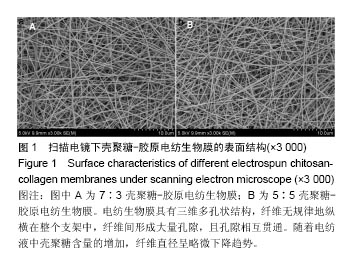
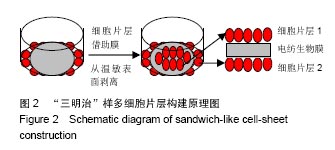
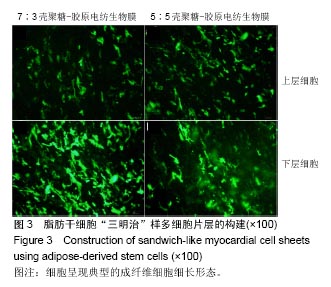
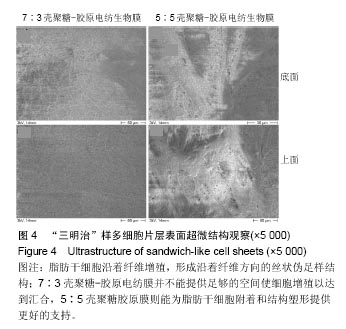
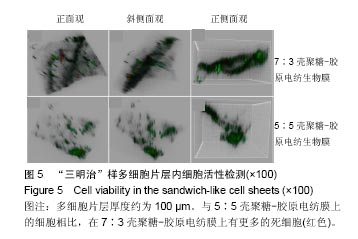
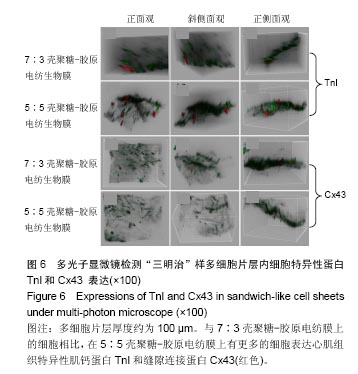
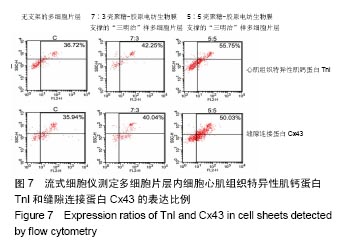

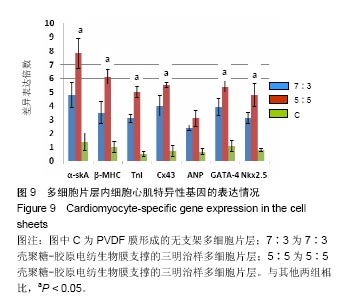
.jpg)
.jpg)